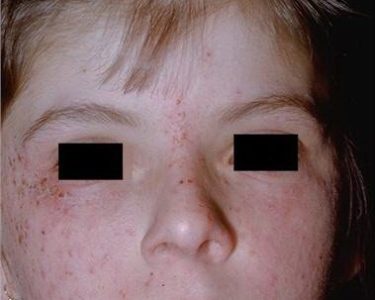What Is Porphyria?
Porphyrias are a group of rare inherited blood disorders. People with these disorders do not make heme, a component of hemoglobin (protein in red blood cells that carries oxygen) properly. Heme is made of porphyrin (a naturally-occurring organic compound in the body) bound to iron. Heme helps red blood cells (RBCs) carry oxygen and also gives RBCs their color. It is also found in myoglobin, a protein in the heart and skeletal muscles.
The body goes through several steps to make heme. However, in people with porphyria, the body lacks certain enzymes needed to complete this process, causing porphyrin to accumulate in tissues and blood. This may cause a variety of symptoms, ranging from mild to severe. The most common symptoms of porphyria are abdominal pain, light sensitivity (causing rashes or blisters), and problems with the muscles and nervous system. The symptoms for porphyria vary and depend on which enzyme is missing.
Porphyria Causes
Causes for porphyria is a genetic disease. According to The Journal of Family Planning (JFP), most types of porphyria causes are autosomal dominant, meaning that a person only inherits the abnormal gene from one parent. (JFP, 2012) However, certain factors may trigger symptoms, known as “attacks.” Factors include:
- drugs
- infection
- alcohol use
- certain hormones, such as estrogen
- sunlight
Porphyria Types
There are several different types causes of porphyria, which are classified into two categories: hepatic and erythropoietic. Hepatic forms of the disorder are caused by problems in the liver and are associated with symptoms such as abdominal pain and problems with the central nervous system. Erythropoietic forms are caused by problems in RBCs.
There are five types of hepatic porphyria:
- acute intermittent (AIP)
- hereditary coproporphyria (HCP)
- variegate porphyria
- aminolevulinic acid dehydratase deficiency (AVADDP)
- porphyria cutanea tarda (PCT)
According to the National Center for Biotechnology Information (NCBI), PCT is the most common type of porphyria. It is associated with extreme sensitivity to sunlight. (NCBI, 2011)
Erythropoietic porphyria is associated with light sensitivity. There are two types—muroporphyria and protoporphyria.
Symptoms of Porphyria
Symptoms depend upon the type of porphyria. Severe abdominal pain is present in all types, as well as urine that is reddish-brown in color. This is caused by the build-up of porphyrins, and typically occurs after an attack.
Symptoms associated with hepatic disease include:
- limb pain
- neuropathy
- hypertension
- tachycardia (fast heartbeat)
- electrolyte imbalance
Symptoms associated with erythropoietic disease include:
- extreme skin sensitivity to light
- anemia (when the body does not produce enough new RBCs)
- changes in skin pigmentation
- erratic behavior related to sun exposure
Diagnosis
Many tests can help diagnose this condition.
Tests that look for physical problems include:
- computed tomography (CT) scans
- chest X-ray
- echocardiogram (EKG)
Tests for blood problems include:
- urine test for fluorescence
- porphobilinogen (PBG) urine test
- complete blood count (CBC)
Porphyria Treatment
There is no treatment for porphyria. Porphyria treatment focuses on managing symptoms. Most cases are treatment of porphyria with medication.
Treatments for hepatic disease include:
- beta blockers (Atenolol) to manage blood pressure
- high carbohydrate diet to aid recovery
- opioids for pain management
- hematin to shorten attacks
Treatments for erythropoietic disease include:
- iron supplements for anemia
- blood transfusions
- bone marrow transplant
Prevention
Porphyria cannot be prevented. However, symptoms can be reduced by porphyria natural treatment or porphyria herbal treatment.
Factors that should be eliminated include:
- recreational drugs
- mental stress
- excessive drinking
- certain antibiotics
Preventing erythropoietic symptoms focuses on reducing light exposure by:
- staying out of bright sunlight
- wearing long sleeves, hats, and other protective clothing while outside
- asking for protection during surgery – in rare cases phototoxic injury can occur. This happens when light perforates the organs and leads to infection.
Complications
Porphyria is incurable and difficult to manage. Complications are common. They include:
- coma
- gallstones
- paralysis
- respiratory failure
- liver disease and failure
- skin scarring
Long-Term Outlook of Porphyria
Long-term outlook varies widely. Patients may not be diagnosed until after damage has been done.
Permanent damage may include:
- breathing difficulties requiring continuous oxygen
- walking problems
- anxiety attacks
- scarring
Early diagnosis can help you lead a relatively normal life. Management is also very important.
If you have an inherited condition, talk to a genetic counselor. He or she can help you understand the risk of passing it to your children.
Source Link : https://www.healthline.com/health/porphyria#Overview1



